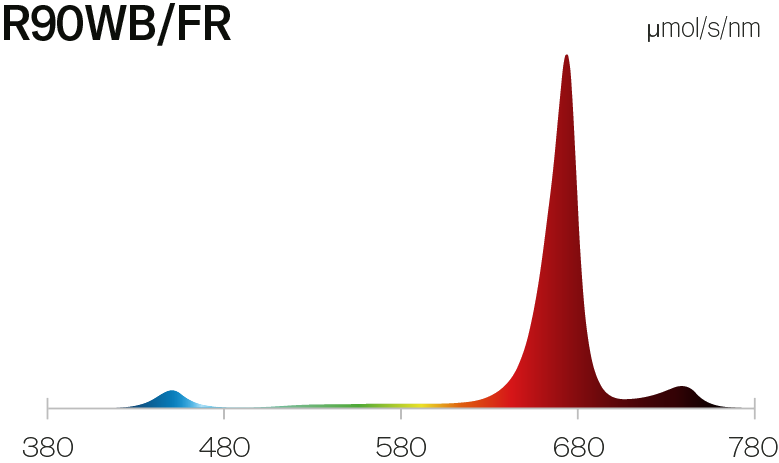Introduction
Let’s face it—greenhouse farming is getting more high-tech by the day. From automated climate control to precision nutrient delivery, innovation is everywhere. But here’s a secret most growers overlook: Far Red light.
You might not see it with your naked eye, but plants definitely do. And trust us, they respond. So if you want to stay competitive and grow smarter, it’s time to understand why every modern greenhouse needs Far Red lighting.
1. A Quick Overview of Greenhouse Lighting
Traditional greenhouses focus heavily on blue and red light, the core of Photosynthetically Active Radiation (PAR). But now, experts are turning to ePAR—extended PAR—which includes wavelengths beyond 700nm. This is where Far Red comes in.
2. Why Far Red is Grabbing Everyone’s Attention
From faster flowering to denser yields, Far Red is no longer a bonus—it’s a must-have tool. Whether you’re growing cannabis, strawberries, or leafy greens, this light spectrum is quietly becoming a game-changer in modern horticulture.
3. Understanding Far Red Light
3.1 What is Far Red Light?
Far Red refers to light in the 700–750 nm range. It’s just beyond what we typically call “visible light,” but plants absolutely sense it.
3.2 Where It Sits in the Light Spectrum
Unlike blue (400–500 nm) and red (600–700 nm), Far Red operates just past the red edge, interacting with plant phytochromes to influence development.
3.3 The Role of Phytochromes in Plant Response
Plants use phytochromes as internal clocks. These pigments absorb red and Far Red light and toggle between active and inactive states, which impacts flowering, stretching, and shade response.
4. The Power of Far Red in Plant Development
4.1 Speeding Up Flowering Cycles
Far Red signals shade conditions, which tells many crops it’s time to flower before competition steals the light. Result? Faster bloom times and quicker harvests.
4.2 Enhancing Photosynthesis Through the Emerson Effect
When Far Red is combined with red light, photosynthesis actually works more efficiently—a phenomenon known as the Emerson Effect. This means more energy, faster growth, and higher productivity.
4.3 Boosting Biomass and Yield
By increasing light penetration and optimizing spectral balance, Far Red contributes to heavier yields, larger leaves, and more fruit sites.
4.4 Managing Plant Morphology (Stretching and Shape)
Need plants to stretch vertically to increase airflow or light access? Far Red encourages internodal elongation—but only when you want it to.

5. Far Red and Crop-Specific Benefits
5.1 Far Red in Cannabis Cultivation
Shorter flowering cycles
Increased bud size and trichome density
Enhanced cannabinoid and terpene expression when dialed correctly
5.2 Tomatoes and Fruit-Bearing Crops
Growers report more uniform ripening, better fruit size, and higher overall yield when using Far Red throughout the flowering stage.
5.3 Cut Flowers
Winter conditions can lead to shorter cut flower stems in greenhouses. The direct and scientifically supported approach to lengthening stems involves manipulating the red:far-red light ratio.
5.4 Leafy Greens and Vertical Farming
For greens like lettuce or spinach, controlled Far Red use can maximize shelf space while keeping production tight and compact.
6. How to Integrate Far Red Lighting in Your Greenhouse
6.1 Standalone Far Red Fixtures vs. Full-Spectrum LEDs
Standalone Fixtures: Add-on units that supplement existing lighting
Integrated LEDs: Spectrum-tunable fixtures that blend Far Red with other wavelengths for complete control
6.2 When and How Long to Run Far Red
End-of-day burst (5–15 minutes) triggers flowering
Throughout photoperiod for photosynthetic enhancement
Avoid long exposure during veg if stretch is undesired
6.3 Avoiding Overexposure and Optimizing DLI (Daily Light Integral)
Too much Far Red? Expect spindly plants. Keep levels balanced with your total light recipe, and monitor PPFD + ePAR.
7. Far Red in Controlled Environment Agriculture
7.1 Adaptive Lighting Strategies
Modern growers now use light recipes that change by the hour and growth phase—Far Red plays a big role in dialing in those transitions.
7.2 Pairing Far Red with Blue and Red for Maximum Efficiency
Far Red works best when paired with Red to drive photosynthesis and tempered with Blue to manage stretch. It’s all about harmony.
8. Debunking Common Myths
Myth #1: Far Red Only Causes Stretch
Stretch is just one effect. Far Red enhances photosynthesis, flowering, and energy use, especially when used strategically.
Myth #2: It’s Not Necessary with Natural Sunlight
Even in sunlight-rich greenhouses, controlling Far Red artificially gives you predictability and consistency—something the sun can’t.
Conclusion
Far Red light is no longer a “nice to have”—it’s a strategic essential for any grower who wants to optimize yield, reduce waste, and increase profits. From flowering speed to canopy management and sustainability, its benefits stretch far beyond what meets the eye.
So if you’re still running a greenhouse without Far Red? It’s time to level up.

